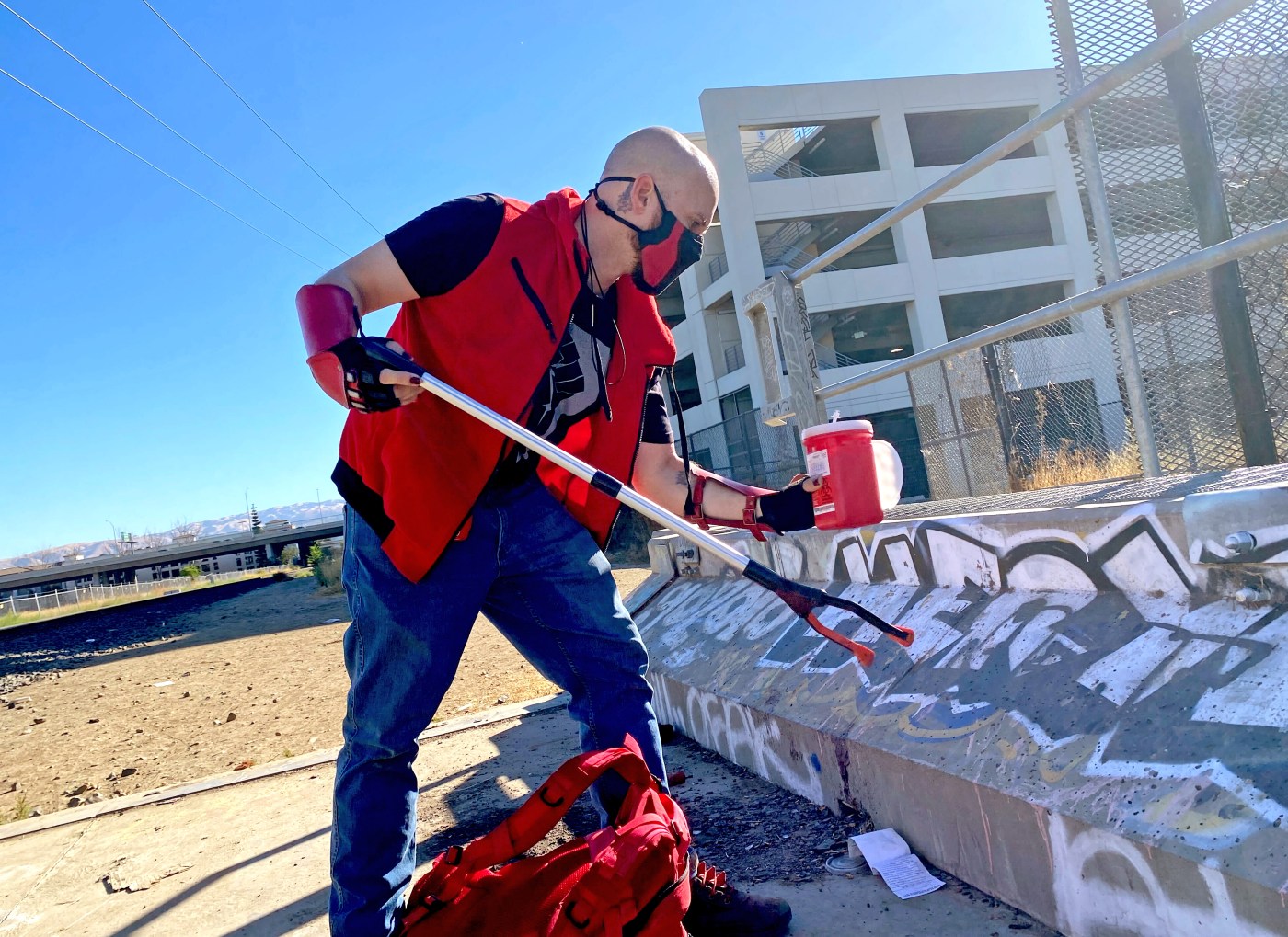While Santa Clara County continues combatting drug overdose deaths by providing overdose-reversing medicine and continuous community outreach, some say that more still can be done to address disparities in deaths related to substance use.
Drug overdose deaths in Santa Clara County have been steadily increasing, from 60 overdose deaths in 2008 to 131 in 2017, an increase of 118%. Between 2018 and 2022, annual overdose deaths sharply jumped from 154 deaths to 353 deaths, a 129% increase. The county had been tracking overdose deaths prior to 2008 in several different ways, the public health department said.
Last year showed a slight decline in drug overdose deaths for the first time since data collection began in 2008 with 317 recorded in the county. This year shows a rate far below last year’s, with 93 opioid-related deaths recorded as of October 2024, according to the coroner’s office, which tracks all deaths within the county.
Data on deaths related to drug overdoses are kept by both the county public health department and the coroner’s office. The public health department tracks deaths involving county residents, even if they died outside of the county, but the coroner tracks all deaths within the county, regardless of whether they were county residents or not.
Dr. Sarah Rudman, deputy health officer for the Public Health Department, said that although fentanyl has remained a major killer since 2019, recent years have shown a trend of rising deaths from methamphetamines and poly-substance use, or the combination of multiple substances leading to someone’s death.
The decrease in deaths in 2023 reflected a decline in the total number of overdoses most notably for both fentanyl and methamphetamine overdoses, but overdoses from poly-substance use were still on the rise, Rudman said.
She also noted that younger people appeared to be dying more from fentanyl overdoses than older generations, but older populations were disproportionately affected by methamphetamine and mixed-drug use.
“What we’re seeing now is that the problem sadly has gotten so severe that many places are interested in joining the fight to prevent overdose who hadn’t needed to in the past,” Rudman said.
Santa Clara County has been a leader in harm reduction — the practice of minimizing the negative health risks associated with drug use and drug laws — for almost 30 years, Rudman said.
The county was among the first in California to provide a clean syringe access program and has worked with community groups to teach users about unknown dangers in the drug supply and how to reduce the risk of overdose and recognize its symptoms in others. The county also distributes harm reduction supplies like Narcan and fentanyl test strips, offering an interactive map displaying overdose prevention resources in various locations.
After discovering that many people who have died from overdoses have survived an overdose in the past, a post-overdose support team was implemented and is taking self-referrals. The team will consist of substance use experts, social workers and peer navigators with lived experience with drug use to reach out to people who survived an overdose to make sure they have the resources not to overdose again.
The county’s public health department also partnered with Community Health Partnership, an association of nine community health organizations that operates and advocates on behalf of 42 clinic sites in the South Bay, for a project called Overdose Data to Action. It is a nationwide effort to gather data on overdoses in communities and provide a data-informed response. Jesse Tarango, director of workforce development at Community Health Partnership, said they are conducting need assessments with health centers to evaluate current harm reduction efforts and figure out how they can improve.
With a focus on education, the group is holding communication and empathy conveyance training and motivational interview training to reduce stigma with their providers so that people feel safe when they come to the health centers. Tarango said the health centers they work with each have a strong connection with different communities and cultures, like the Asian American community or Hispanic and Latin American communities, and they would like to continue with stigma reduction to educate as many people as possible and encourage people or their friends and family to seek treatment.
“Sometimes people are hesitant to seek help from the government, from the county or from the state or from the police, so by having a nonprofit such as ours that has built a relationship and that rapport with our community, we’re able to provide these resources,” Tarango said.
Crimson Fist, an activist with the mutual safety organization Bay Area Superheroes, walked along the Guadalupe River Trail in San Jose, Calif. on Sept. 27, 2024, carrying harm reduction supplies, like Narcan and clean needles, for distribution while also picking up used needles along the path. (Nollyanne Delacruz/Bay Area News Group)
Related Articles
Man accused of murder in California teen’s 2020 fatal fentanyl overdose
Grandfather begged for custody before San Jose boy, 6, stabbed to death, lawsuit says
6 myths about California crime as voters weigh ballot measure on drugs, retail theft
Man who sold fentanyl-laced pill hit with $5.8 million judgment for overdose death of California college student
Baby Winter fentanyl death: Judge upholds murder charges for two in unprecedented case
However, for Crimson Fist, an activist with mutual safety organization Bay Area Superheroes, the issue of drug overdoses affecting unhoused people is “as high as you might expect” among that community. Out of the 230 recorded opioid deaths in 2023, 21 happened at homeless encampments or involved transient residents.
Although he acknowledged the county’s outreach efforts, he said that a lot of the county’s programs don’t always involve meeting people on the streets as it’s more focused on getting people to apply to have the overdose-reversing drugs sent through the mail.
“They know what’s going on out there, and I just think there’s a lack of that boots-on-the-ground effort to get people out there and get safe supplies to people as much as they can as well as get them the resources to hopefully help them in other ways,” Crimson Fist said.
Santa Clara County’s public health department stated that its Harm Reduction Program provides services in encampments two days a week. In 2023, the team was able to distribute 414 naloxone kits and 1,458 fentanyl test kits and provided training on how to use them. They also stated that over half of the 1,773 participants served at the Public Health fixed sites for harm reduction self-identified as unhoused.
Crimson Fist also advocated for the county to invest in solving other issues, like housing and access to medical and mental health treatment, as people who use drugs tend to be “using it to alleviate more problems in their lives more often than not.”
Crimson Fist said, “Narcan is a medicine that you give when someone has an overdose. It’s not the cure for overdoses happening. We need to see a step-up from the county, from the state, from basically everywhere on tackling the crises that are causing the crisis that we’re facing right now.”












